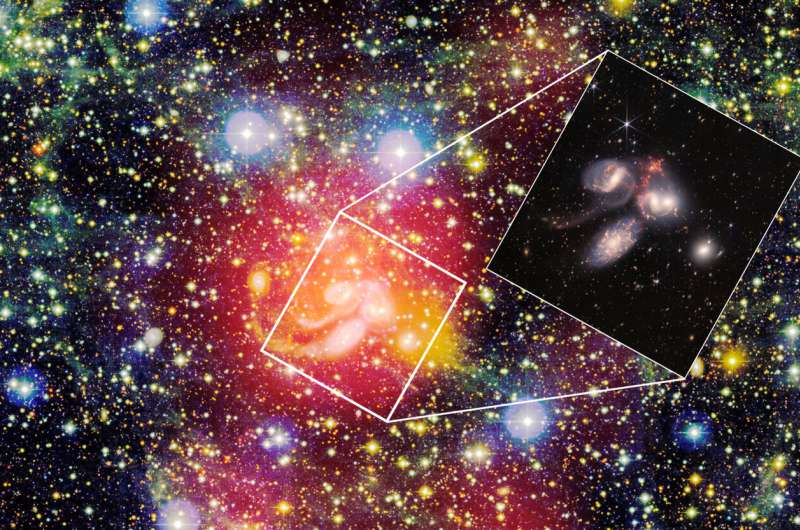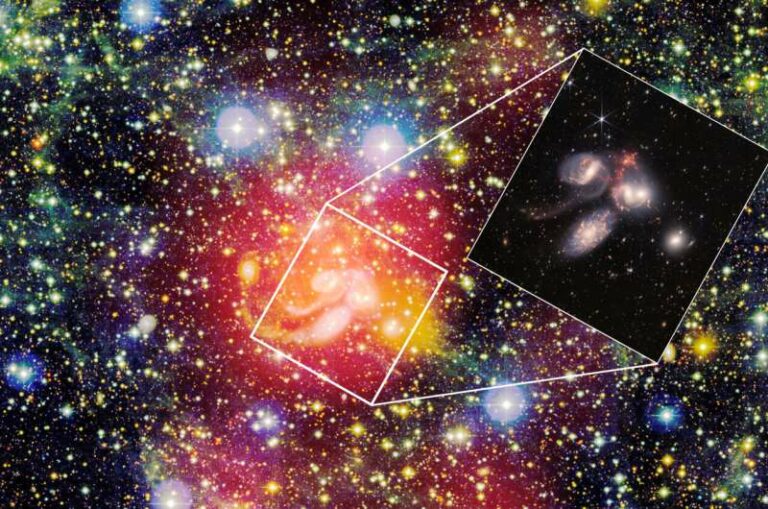FAST discovers largest atomic gas structure around a galaxy group.
All galaxies are created from the same fundamental substance, atomic gas. The process of atomic gas accretion from the intergalactic medium and subsequent star formation mostly accounts for how galaxies evolve.
In order to understand galaxy formation and evolution theories, it is essential to see and explore the atomic gas in and around galaxies. Observing the 21-cm fine structure line emission of atomic hydrogen in the radio waveband is the most direct way to study atomic gas.
Recent deep mapping observations of 21-cm line emission in the vicinity of the well-known compact group of galaxies “Stephan’s Quintet” using the Five-hundred-meter Aperture Spherical Telescope’s (19-beam receiver) led by Xu Cong, a researcher from the National Astronomical Observatories of the Chinese Academy of Sciences (NAOC), revealed a very large atomic gas structure with a length of about 2 million light years (about 20 times the size of the Milky Way).

Their findings were published in Nature on Oct. 19.
The world’s largest and most sensitive single-dish radio telescope, FAST has the greatest L-band multibeam feed array for 21-cm line observations with a 19-beam reception. A fresh window on atomic gas in the cosmos, particularly for low density diffuse gas far from galaxies, was opened with the full commissioning of the FAST 19-beam receiver.
“This is the largest atomic gas structure ever found around a galaxy group,” said Xu. The observations reached a sensitivity of 1σ=4.2×1016 cm-2 per channel (Δv=20 km s-1; angular-resolution=4′), making them currently the most sensitive observations of atomic hydrogen 21-cm line emission at this angular resolution.
Since its discovery by the French astronomer Edouard Stephan in 1877, the Stephan’s Quintet has been solving mysteries pertaining to the intricate web of connections between galaxies and between galaxies and the intragroup medium.
The new findings reveal the presence of large-scale, diffuse, low density gas far from the group’s core. This gas is most likely older than 1 gigayear and has a column identity smaller than 1018 cm-2. Because it is unclear how the low-density atomic gas can survive being ionized by the intergalactic UV background on such a long time scale, the data cast doubt on the present idea of galaxy-group formation/evolution.
Source:PhysORG
Do not forget to share your opinion with us to provide you with the best posts !




0 Comments